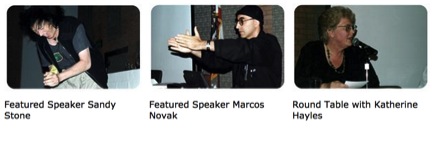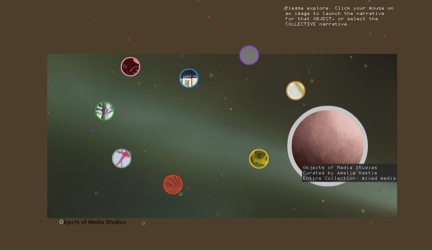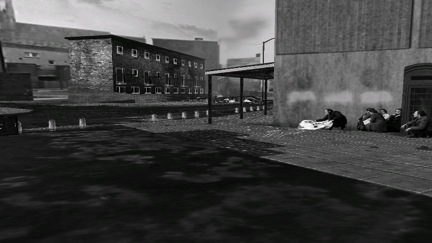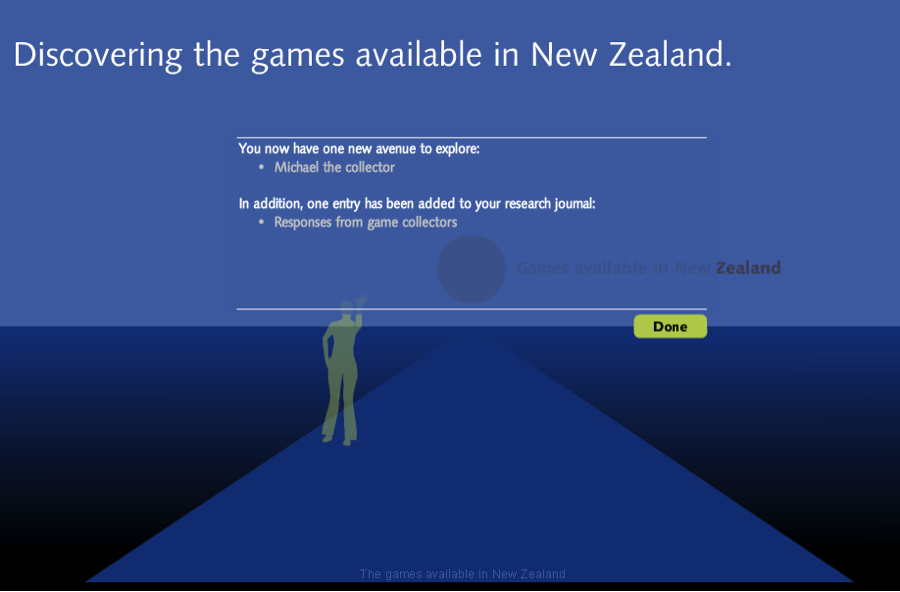Bringing Critical Perspectives to the Digital Humanities: An Interview with Tara McPherson (Part Two)
/Another key aspect of the original conference and to some degree this book was to broker a kind of conversation between experimental artists working with digital media and academic theorists seeking to imagine digital presents and futures. What do you see as the value of such interactions between artists and academics? I see these types of interactions as incredibly important. I draw my inspiration in this regard from feminism and its engagements with media. We can trace decades of feminists blurring the lines between theory and practice, from Maya Deren to Laura Mulvey to Alexandra Juhasz and Sharon Daniel, among many others. Their work powerfully illustrates how theory and art exist in rich feedback loops. It is hard to imagine Mulvey reaching the insights of her landmark essay distinct from her engagement with practices of production. Such exchanges between theory and practice need not only happen at the level of the individual, of course. Something quite powerful can happen when theorists and artists work together.
One of my favorite classes as a graduate student in the 1990s was a course in feminist media that was team taught by the theorist Patricia Mellencamp and the video artist Cecelia Condit. The two came together to offer the class based on a friendship that grew out of Pat writing about Cecelia’s work. The course combined students from film production and from the film studies program at the University of Wisconsin-Milwaukee. The film production department skewed toward experimental practice, while the film studies program was then part of the theory-rich Modern Studies track within English. Students were encouraged to stretch outside of their comfort zones and to work in the medium less familiar to them, be that print or video. The experience profoundly reconfigured how I understood feminism and collaboration and gave me a hands-on engagement with making that no doubt continues to influence me today. The films I worked on that term were not very good, but they opened me up to new ways of thinking about the materiality of production practices and to different aesthetic registers. They also modeled for me the generosity and commitment that collaborations across difference require, as both Pat and Cecelia actively engaged different ways of producing knowledge than those they’d previously worked within. I had the opportunity to collaborate with students who were primarily artists, and this experience was incredibly invigorating, even as it was often challenging.
In imagining what Vectors might become, I drew from these histories – both this personal history and those of feminism itself, including Marsha’s work on Labyrinth – to create an environment that combined theory and practice. Vectors is an online interactive project lodged between a journal and an exhibition space that features work that cannot exist in print. It began from conversations at USC’s Institute for Multimedia Literacy (now morphed into our Media Arts + Practice Division). In this milieu, many of us were teaching with digital media and came to see rich possibilities for these practices in our scholarship, but there were virtually no venues in which scholarly interactive work could be reviewed and published. Dean Elizabeth Daley saw a real advantage in supporting this kind of project within the School of Cinematic Arts and provided our early funding. I worked alongside my colleague Steve Anderson to imagine the shape that Vectors might take. From the beginning, we knew that we wanted to create a space where artists and scholars worked closely together. We soon brought Reagan Kelly and Erik Loyer aboard as Co-Creative Directors, and the fun really began.
In 2003 when we began our planning, very few humanities scholars had the skillsets they would need to produce digital scholarship. So we created a fellowship model that brought together scholars with our design, programming, and editorial team. Scholars came for a weeklong summer intensive for a kind of digital boot camp and then collaborated with one designer and one editor in a distributed fashion over several months. After the first summer workshop and as we worked on the first issue, Craig Dietrich joined our team as our technical director. The goal was not to build something for the scholar but to build something with the scholar.
Vectors was developed as a space for experimentation in screen languages, open access publishing, and collaborative design and authorship. Our projects were speculative in the sense that Johanna Drucker describes, committed to the richness that emerges when art and theory collide. They were also centered on the critical and theoretical questions that motivated the scholars with whom we worked, humanities scholars interested in questions of memory, race, gender, embodiment, sexuality, perception, temporality, ideology, and power.
Vectors engaged these themes at the level of content but also integrated form and idea so that the theoretical implications of the work were manifest in the aesthetic and information design. We were interested in seeing how you might immerse yourself in an article in multiple affective and sensory registers. We wanted to see if you could play an argument like you might play a game. We asked what might happen if scholarship explored the emerging vernaculars of the digital, drawing from both artistic and popular expression. The collaborative production process that resulted was highly iterative, based on careful listening and an ongoing give and take. The works we produced are deeply marked by these exchanges.
I was struck in 1999 by your effort to also create a space where artists working in the museum and gallery space were engaging with game designers working in more commercial contexts. This dimension seems to have dropped out of the Transmedia Frictions book altogether. What does this suggest about the continued roles of cultural hierarchies in the realms of digital art and theory?
Well, as you know, I’ve got a soft spot for game designers and programmers, since my husband, Robert Knaack, worked in that industry for over fifteen years and still designs software for the entertainment industry. Having seen his work in the games industry and in the animation business, I know that there is no firm line dividing experimental artists from those working in more commercial arenas. In fact, there’s a lot of give and take between the fields and creating a false binary between the arts and commercial games or animation conceals a deep history of interaction between Hollywood and more experimental artists.
I don’t think that binary serves us all that well if we really want to understand how aesthetic paradigms get developed and naturalized. Rather we might instead focus on movement between the realms (as well as on the plusses and minuses of those movements.) We even see this reflected in the various divisions at USC’s School of Cinematic Arts. For instance, our Division of Animation and Digital Arts (DADA) deeply values experimental practice and technique, even as many of their students will go on to work in commercial animation. It’s probably not surprising that both the Labyrinth and Vectors teams have collaborated with graduate students from DADA.
At Vectors, we worked with then-MFA student Alessandro Ceglia for a couple of years. One interesting project he designed was a recreation of a Jenny Holzer exhibit at the Berlin Neue Nationalgalerie. Working with scholars Ehren Fordyce and Gwen Allen, Alex imagined a project with multiple goals. On the one hand, the piece combined video, animations, essays, and photographs, to create a multimedia catalogue of a powerful and important exhibition. On the other hand, the project moves beyond mere documentation to structure an argument about the relationship between evidence and interface. As we noted in the piece’s editorial introduction in Vectors:
In selecting what perspectives and artifacts would be included and in deciding how to structure access to these elements, the project privileges modes of presentation in dialogue with contemporary scholarship in performance studies, art history, and cultural studies. In detailing the sustained and collaborative labor involved in the construction of Holzer's LEDs, the piece reminds us of the often-invisible work that underlies our experiences of media and of art, something much less obvious to the visitors immersed in the dreamy modernist spaces of the original installation. In that regard, it [has] a precise goal: the desire to always remember the material in our engagements with the ephemeral.
Alex brought a unique perspective to the Vectors team and enriched our collaborative work process, designing three projects over multiple issues. He now works as both a commercial and an experimental animator.
The 1999 Interactive Frictions event honored this give and take between the experimental, the academic, and the commercial. Representatives of all three realms participated in the event, and that convergence greatly enriched the weekend. Someone like Brenda Laurel has moved back and forth across her career between commercial and academic realms, and it was very important to us that kind of movement could be discussed as part of the event’s larger dialogues.
Interesting collaborations also grew out of the weekend. As Marsha noted in her interview last week, Bill Viola was part of the conference and went on to work with USC’s interactive division on subsequent projects. David and Yoni Koenig, game designers (and partners in my husband’s company at the time, Gigawatt), presented at the conference and met curator and documentary filmmaker, Trisha Ziff. While both brothers have had long careers in the entertainment industry, David also has a Masters in History from Columbia, and Yoni is an artist who works across many media. Gigawatt went on to collaborate with Trisha on a virtual re-enactment of Ireland’s Bloody Sunday for Hidden Truths, a major exhibit at the California Museum of Photography. The event included historic documentary photographs, newly-commissioned art, and the virtual recreation built using their company’s video game technology. This was in 2000, a pretty early exploration of 3-D game technology for social documentary. The inclusive nature of Interactive Frictions helped seed such collaborations, as it refused to reinforce rigid binaries between art and commerce, even while encouraging rigorous and sometimes contested conversations about each.
As I mentioned earlier, Erik Loyer also presented at Interactive Frictions and later became a core part of our development team, joining Vectors as a Creative Director in 2004 (along with Raegan Kelly) and continuing on to the present. His career also illustrates the limited nature of artificial commerce vs. art binaries. His portfolio includes early interactive work now in SF MOMA’s permanent collection, Clio-winning work for Vodaphone, and critically-appraised apps such as Strange Rain. Erik brings this flexibility and vision to his work with Vectors and Scalar. Several of the projects he has worked on for Vectors experiment with the language and mechanics of video games in order to explore the possibilities of such dynamics for scholarly argument. I’d say that most of our work at Vectors and Scalar draws from equally from experimental aesthetics, popular digital vernaculars, and academic theory.
Tara McPherson is Associate Professor of Critical Studies at USC’s School of Cinematic Arts and Director of the Sidney Harman Academy for Polymathic Studies. She is a core faculty member of the IMAP program, USC’s innovative practice based-Ph.D., and also an affiliated faculty member in the American Studies and Ethnicity Department. Her research engages the cultural dimensions of media, including the intersection of gender, race, affect and place. She has a particular interest in digital media. Here, her research focuses on the digital humanities, early software histories, gender, and race, as well as upon the development of new tools and paradigms for digital publishing, learning, and authorship.
She is author of the award-winning Reconstructing Dixie: Race, Gender and Nostalgia in the Imagined South (Duke UP: 2003), co-editor of Hop on Pop: The Politics and Pleasures of Popular Culture (Duke UP: 2003) and of Transmedia Frictions: The Digital, The Arts + the Humanities (California, 2014), and editor of Digital Youth, Innovation and the Unexpected, part of the MacArthur Foundation series on Digital Media and Learning (MIT Press, 2008.) She is currently completing a monograph about her lab’s work and process, Designing for Difference, for Harvard University Press. She is the Founding Editor of Vectors, a multimedia peer-reviewed journal affiliated with the Open Humanities Press, and is a founding editor of the MacArthur-supported International Journal of Learning and Media (launched by MIT Press in 2009.) She is the lead PI on the new authoring platform, Scalar, and for the Alliance for Networking Visual Culture. Her research has been funded by the Mellon, Ford, Annenberg, and MacArthur Foundations, as well as by the NEH.



































